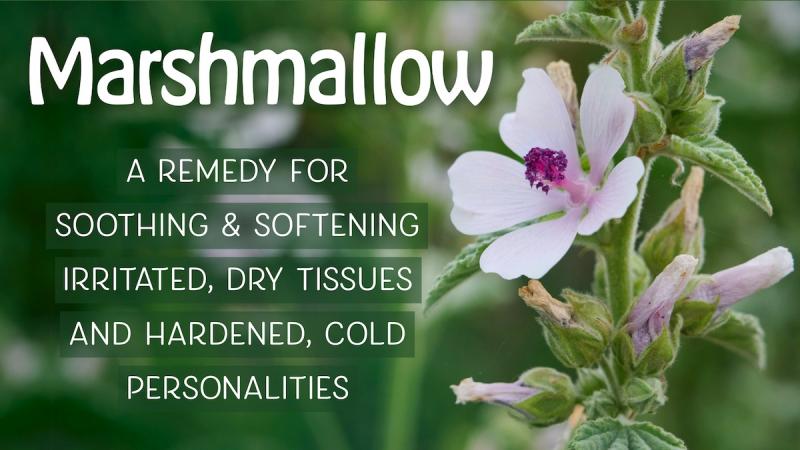
Marshmallow and slippery elm are both mucilaginous remedies. This means that their healing action is largely due to their high content of water-soluble fiber. It also means they can be used for similar purposes. Both are soothing to dry, irritated tissue. Both have been used as mild, nourishing foods for emergency survival and for rehabilitation after prolonged illness.
However, I recommend using marshmallow instead of slippery elm (Althea officinalis) because it is a more sustainable remedy. Unlike slippery elm, it's easily grown and doesn't involve stripping bark of off trees. Furthermore, if you include the mallows in the Malva genus (Malva neglecta, M. sylvestris, and M. parviflora) which can be used for the same purposes, mallow is also cheaper and more plentiful than slippery elm. In this article, most of what I say about marshmallow (Althea) also applies to the various Malava species.
Marshmallow as a Food
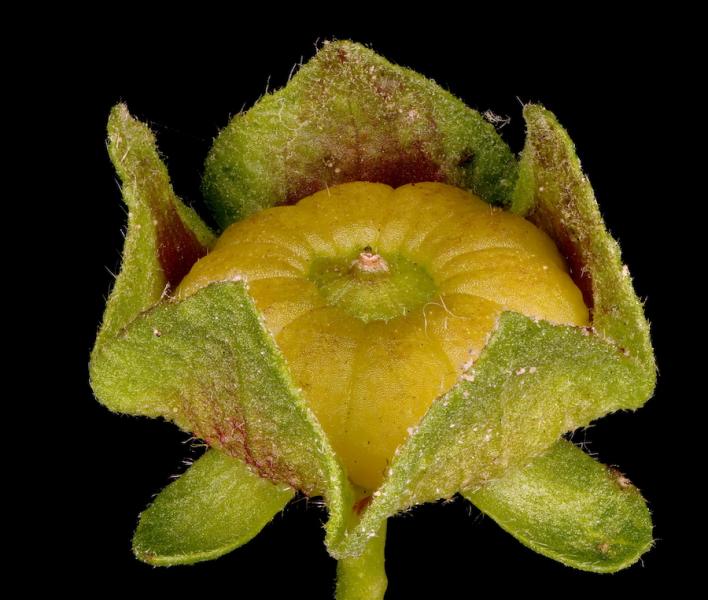 It is no accident that marshmallow has the same name as the marshmallows used for s'mores and crispy rice treats. At one time that sweet puffy confection was made with Althea roots. The many plants in the Malvacea (mallow) family have been eaten as food, including Althea and the Malva species mentioned previously. The book of Job in the Old Testament even mentions mallows being eaten in times of famine (Job 30:3-4). While this reference is probably to a different member of the mallow family, it demonstrates that many different mallows have been consumed when people were short on food.
It is no accident that marshmallow has the same name as the marshmallows used for s'mores and crispy rice treats. At one time that sweet puffy confection was made with Althea roots. The many plants in the Malvacea (mallow) family have been eaten as food, including Althea and the Malva species mentioned previously. The book of Job in the Old Testament even mentions mallows being eaten in times of famine (Job 30:3-4). While this reference is probably to a different member of the mallow family, it demonstrates that many different mallows have been consumed when people were short on food.
I’ve eaten both the leaves and fruits of the common mallow (M. neglecta). I've picked the young leaves and eaten them raw or in a salad, but the older ones tend to be more fuzzy and eating a lot of them can be a little irritating to the mouth. If you cook them and eat them, no problem. I’ve also picked the green fruits, which are sometimes called “cheesies” because they look like tiny cheese rounds. They’re the tastiest part. I showed my kids how to eat them and they would also pick and eat them just because they taste good. You can also dig up the roots of common mallow and use them as a substitute for marshmallow.
Marshmallow and Mucous Membranes
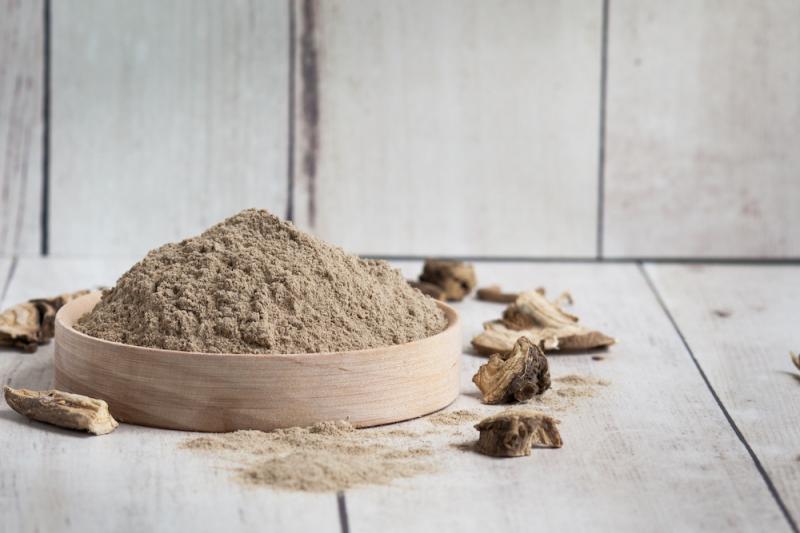 Marshmallow is one of the best sources of easily digested mucilage, containing about 25 to 30 percent of these indigestible polysaccharides. This mucilage coats the mucous membranes of the digestive tract soothing irritation and dryness and acts as a mild bulk-forming laxative. The roots also contain about the same percentage of starch, which is why they have caloric value as well.
Marshmallow is one of the best sources of easily digested mucilage, containing about 25 to 30 percent of these indigestible polysaccharides. This mucilage coats the mucous membranes of the digestive tract soothing irritation and dryness and acts as a mild bulk-forming laxative. The roots also contain about the same percentage of starch, which is why they have caloric value as well.
Marshmallow has an affinity for the skin and mucous membranes. Taken internally, either alone or in combination with herbs like slippery elm, aloe vera, and licorice root it can soothe digestive irritation in colitis, ulcerations, irritable bowel syndrome, peptic ulcers, and gastritis. Taken in larger amounts along with plenty of water, it can help soften hard dry stools. For this purpose, it can be combined with slippery elm, freshly ground flax or chia seeds, or seaweed powders.
It has the same soothing and moistening effect on the mucous membranes lining the respiratory and urinary passages. It is especially useful for dry, unproductive coughs. If someone has a cough and keeps hacking, but nothing comes up consider using marshmallow along with mullein to hydrate the lungs and make the cough productive. It also has a healing effect on lung tissue in chronic lung disease (COPD). In this case, you can combine it with mullein and astragalus.
In the urinary system, marshmallow is helpful for burning or scalding urination and cystitis. Here it combines well with corn silk, cleavers, and/or watermelon seed, all of which act as soothing, non-irritating diuretics. It can also be helpful for passing kidney stones when used with hydrangea, lemon juice, or other lithotriptic herbs. It soothes the irritated urinary passages and makes passing the stones easier.
Other Uses for Marshmallow
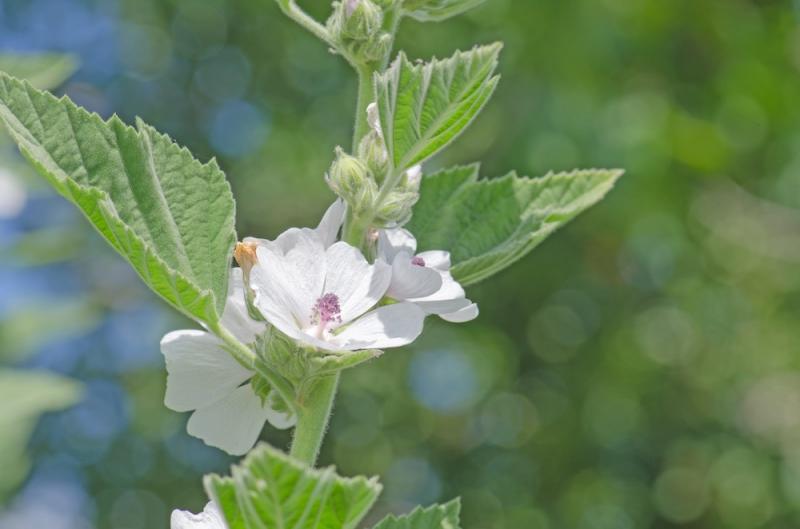 Marshmallow has been used to enrich breast milk and increase its production. It combines well with fenugreek, blessed thistle, or milk thistle for this purpose.
Marshmallow has been used to enrich breast milk and increase its production. It combines well with fenugreek, blessed thistle, or milk thistle for this purpose.
Marshmallow is also used topically in a similar manner to slippery elm. It can serve as a base for a poultice for soothing any problem involving inflamed skin. This includes heat-induced or chemical burns and conditions with itchy, red skin.
Dr. John Christopher tells the story of a man scheduled to have his legs amputated to halt the progress of gangrene. He prescribed soaking the legs in a warm decoction of marshmallow root and cayenne alternated with soaking in cold water. Months later, the man came back to him, walking on his legs that had been so badly diseased.
Emotional Uses for Mallows
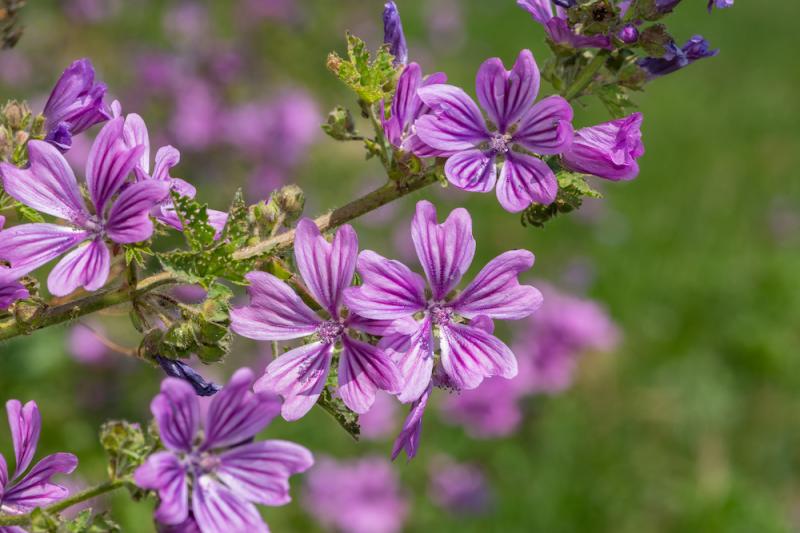 FES Services makes a mallow flower essence, but it’s not from Althea or Malva. It’s made from a different member of the mallow family, Sadalcea glaucescens, a plant native to California. However, the indications for FES mallow provide clues as to the emotional effects of the other mallows. Someone who needs the mallow flower essence is a softy at heart but appears aloof and cold. Because of their extreme sensitivity, they are afraid of being hurt in relationships. They put up barriers to others which may make them appear cold and aloof, perhaps even unkind or indifferent. Mallow flower essence helps them become more warm and personable in relationships, approaching others with a more friendly and open heart.
FES Services makes a mallow flower essence, but it’s not from Althea or Malva. It’s made from a different member of the mallow family, Sadalcea glaucescens, a plant native to California. However, the indications for FES mallow provide clues as to the emotional effects of the other mallows. Someone who needs the mallow flower essence is a softy at heart but appears aloof and cold. Because of their extreme sensitivity, they are afraid of being hurt in relationships. They put up barriers to others which may make them appear cold and aloof, perhaps even unkind or indifferent. Mallow flower essence helps them become more warm and personable in relationships, approaching others with a more friendly and open heart.
Matthew Wood extends some of these characteristics to the person who needs marshmallow (Althea officinalis). He suggests that people who need marshmallow emotionally tend to be inflexible, narrow-minded, hardhearted, insensitive, and unsympathetic to others. In my experience, people who are like this have been deeply wounded in past relationships. They've hardened their heart or soul to protect their inner vulnerability. Marshmallow would help to heal these inner emotional wounds allowing them to soften their protective emotional shell.
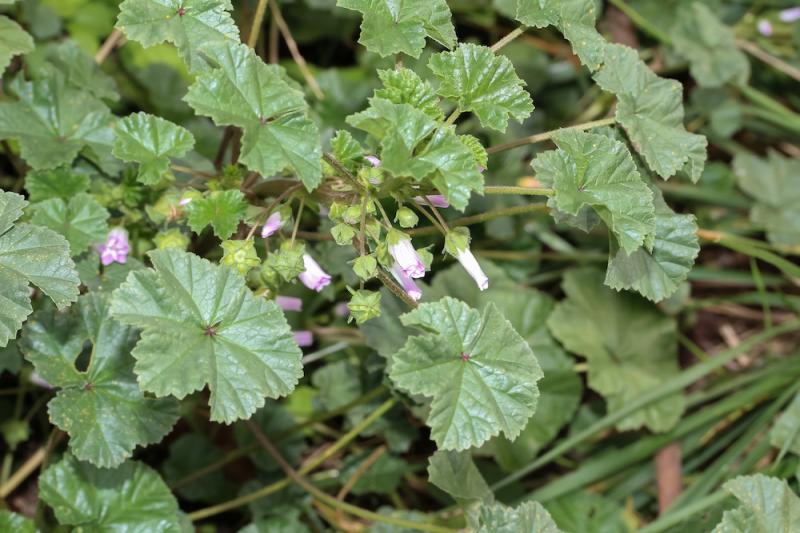 I also found references to a couple of European companies that make a flower essence of Malva sylvestris. It has a similar theme, being used to help people who are socially cold and insensitive. It helps them develop greater openness, warmth, and social grace.
I also found references to a couple of European companies that make a flower essence of Malva sylvestris. It has a similar theme, being used to help people who are socially cold and insensitive. It helps them develop greater openness, warmth, and social grace.
This brings us to the common mallow (Malva neglecta). The Latin neglecta comes from the Latin neglectus, which is the origin of the English word neglect. The Latin definition includes being disregarded, ignored, overlooked, passed over, or even despised. Obviously, there are people in the world who are definitely ignored, passed by, and even mistreated. This includes many who are poor or homeless. The common mallow is a neglected plant, considered a weed it is disregarded as a medicine and overlooked as an herbal remedy. So perhaps, it's a remedy for those people who society has neglected and have become hardened and cold because of that neglect. It's an idea worth exploring.
Using Marshmallow
Marshmallow works fine in capsule form. You can take anywhere from three to a dozen capsules a day spaced into two or three doses. Be sure to drink plenty of water with it.
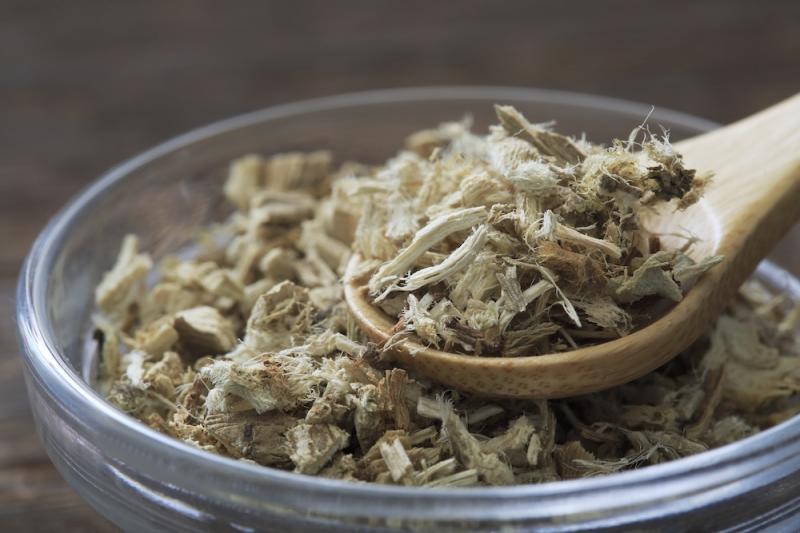 While most mucilaginous herbs can’t be used in tea or syrup form because they just turn into a sticky, slimy mass when added to water. But marshmallow can be used as to make a tea by steeping one Tablespoon of the chopped roots in cold water for about ten minutes. You can drink one to six cups a day. You can also make a tea from the fresh or dried leaves of both the Malva and Althea species.
While most mucilaginous herbs can’t be used in tea or syrup form because they just turn into a sticky, slimy mass when added to water. But marshmallow can be used as to make a tea by steeping one Tablespoon of the chopped roots in cold water for about ten minutes. You can drink one to six cups a day. You can also make a tea from the fresh or dried leaves of both the Malva and Althea species.
Marshmallow can also be made into a syrup or glycerite for dry coughs. I’ve made a dry cough formula using equal parts of marshmallow and mullein with much smaller amounts of herbs like plantain, licorice root, American spikenard, angelica root, and/or pleurisy root. This is very helpful for people with chronic lung problems like COPD who have an unproductive hacking cough.
One final interesting possibility is to make natural marshmallows with Althea root. Dorothy Hall mentions eating one of these with dinner to aid digestion and promote better sleep. I was intrigued by this idea so I found a couple of recipes: How to Make Marshmallows with Marshmallow Root by Rosalee de la Forêt and another from a food blog called Food Crumbles. The first is more of a medicinal treat, the latter more of an attempt to duplicate the modern marshmallow. I haven’t tried either recipe, so if you try them, I'd love to hear how they turned out.
Steven's Articles
October
-

-
Understanding Caffeine & Cellular Adaptation
Preserving the power of caffeine's buzz and the…
September
-

-
Horseradish
A pungent spice for aiding protein metabolism…
-

-
Banaba or Crepe Myrtle
A beautiful tree from Southeast Asia whose leaves…
August
-

-
Monkeyflowers
Flower essences to help see ourselves more clearly…
-

-
Mariposa Lilies
Strengthening the bond between mother and child…
-

-
The Noble Bay Leaf
A common kitchen herb for aiding digestion and…
-

-
Epimedium: Horny Goat Weed
A circulatory stimulant and kidney yang tonic…
July
-

-
The Medicinal and Nutritional Benefits of Apricots
A nutritious fruit and valuable medicinal seed for coughs
-

-
Dogwoods
Asian dogwood is used to stop excessive discharge,…
June
-

-
Neem: The Village Pharmacy
A popular Ayurvedic remedy for dental and immune…
-

-
Spilanthes: The Toothache Plant
A traditional remedy for teeth and gums, as well…
-

-
Forsythia
An anti-inflammatory, fever-reducing, and infection fighting herb
May
-

-
Buckwheat (Kashi)
A delicious, high protein, gluten-free, gut-healthy food
-

-
Leaky Gut Syndrome
Plugging the leaks on the underlying cause of…
-

-
Storksbill
An edible, medicinal, weedy herb, helpful for…

